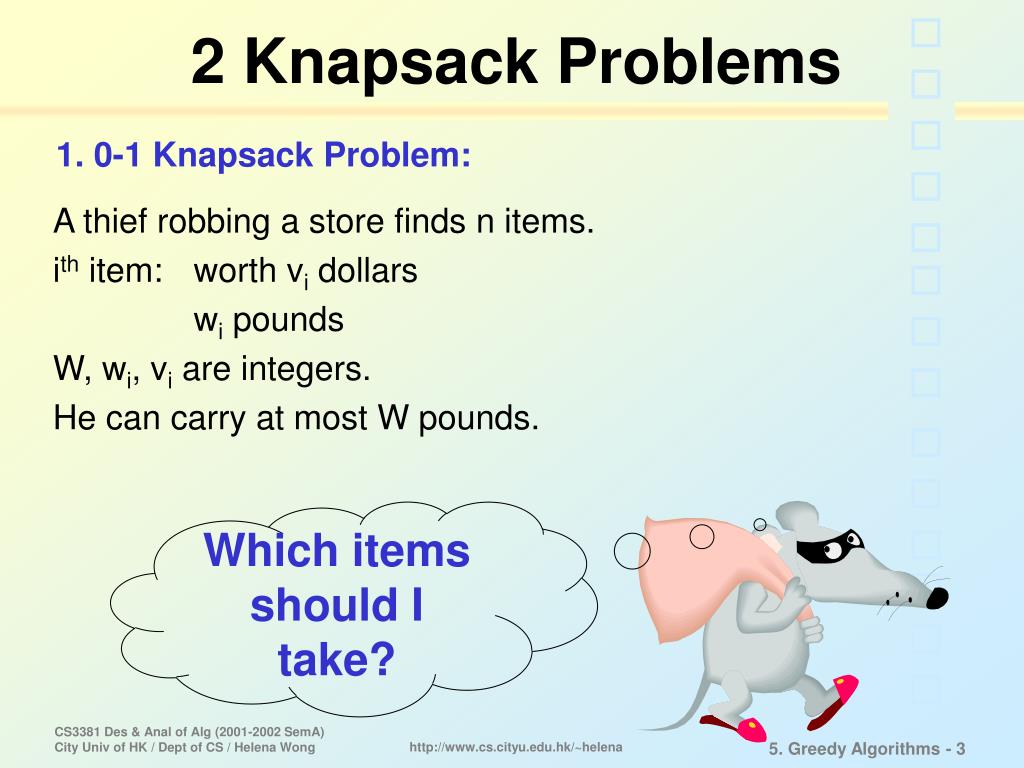

KNAPSACK PROBLEM EXPLAINED CODE
We will discuss the code template for this approach in the below two chapters: The maximum value we can get is 0 when we are to put 0 weight in knapsack. Result = dp, where n = total number of items, W = weight we need to put in knapsackĭp = 0, for all i. In this case we just move on to the next item without including items, so the weight w remains the same.Īt the end, we take the maximum of the value gotten from (1) and (2), as shown below.ĭp = max(dp, dp] + val) To include more than instance of the same item if we want. Let dp define the maximum value obtainable when we have to put exactly weight w in the knapsackĪnd we have items as our items and their values as val and their weights weights.įor every possible weight w j we have two options:ĭp = val + dp]

In most simple problems it won't matter which implementation we go with,īut for some no-so-trivial problems the order of the outer loop and inner loop would matter,Ĭoin Change: Total no. Try to understand the difference between the above two implementations really well as we would need them We get the dp for the entire item array weights only in the last iteration

So here when when we are computing dp for item with index = i, we are computing dp for items array weights and Maximum value that the knapsack can carry when maximum knapsack capacity is weight jĪnd the items array is weights which is a subset of the item array given in the original problem". The Knapsack Problem 20 W 10 20 15 n items with weight wi Nand prot pi N Choose a subset x of items Capacity constraint P ix wi W wlog assume P i wi >W, i : wi 

 0 kommentar(er)
0 kommentar(er)
